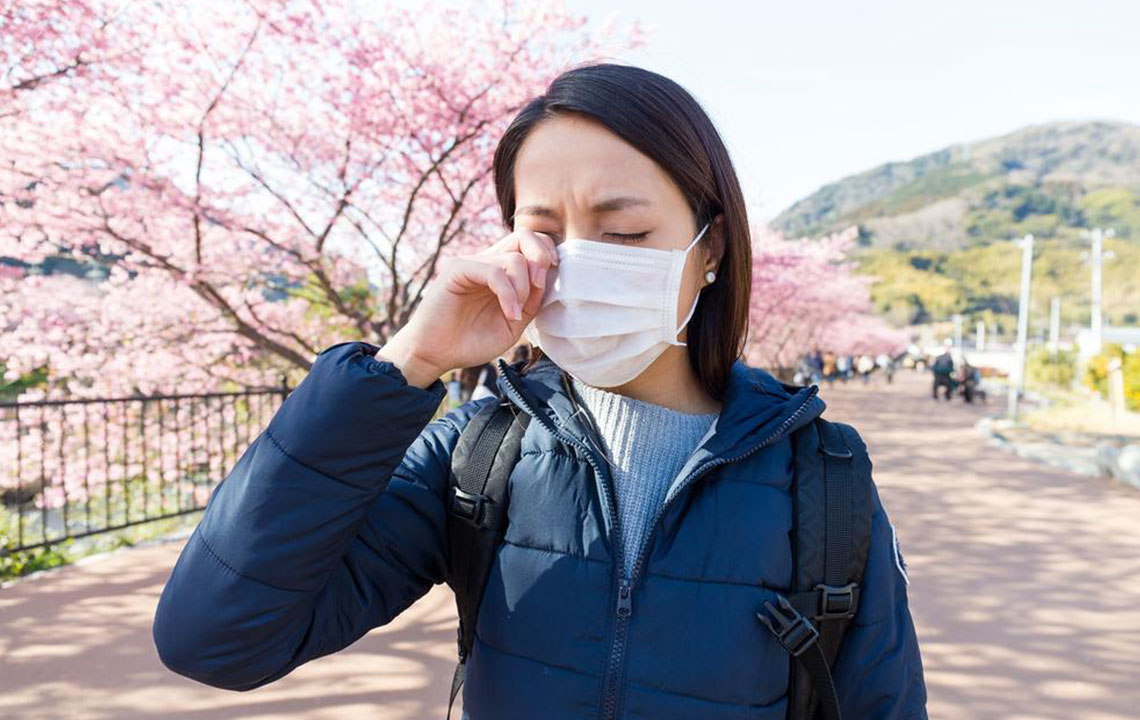Comprehensive Guide to Persistent Allergies: Causes, Managing Strategies, and Long-Term Solutions
Explore the comprehensive causes, diagnosis, and management strategies for persistent allergies. Understand how age, environment, genetics, and lifestyle influence chronic allergic reactions and learn effective ways to control and alleviate symptoms. This detailed guide offers practical solutions for living healthier despite ongoing allergy challenges.

Many individuals experience allergy symptoms that seem to come and go, often aligning with seasonal changes such as springtime blooms or autumn leaves. These seasonal allergies are common and typically subside once the specific season concludes. However, a subset of people faces ongoing allergy issues that persist throughout the year, regardless of seasonal shifts. These are known as chronic or persistent allergies, and understanding their underlying causes is essential for effective management and relief. In this comprehensive overview, we'll explore what causes persistent allergies, how they differ from seasonal allergies, and practical strategies to manage and mitigate their impact on daily life.
Understanding the Nature of Persistent Allergies
Allergies occur when the immune system reacts abnormally to substances that are usually harmless to most people, called allergens. Common allergens include pollen, dust mites, pet dander, mold, and certain foods. While seasonal allergies are triggered predominantly by environmental factors fluctuating with the time of year, persistent allergies involve a continuous exposure or heightened sensitivity that keeps symptoms active over long periods.
The Key Differences Between Seasonal and Persistent Allergies
Seasonal allergies, also called hay fever or allergic rhinitis, tend to appear during particular times of the year, such as spring and fall, when certain plants pollinate. Once the season ends, symptoms often improve or resolve completely. Conversely, persistent allergies are characterized by symptoms that last for several months or even year-round. They are less tied to environmental cycles and more related to ongoing exposure or internal factors.
Causes of Long-Lasting Allergies
1. Ageing and Immune System Changes
As we age, our immune system naturally undergoes changes, sometimes becoming less efficient at fighting off infections and regulating allergic responses. This immune decline can make older adults more susceptible to persistent allergies or exacerbate existing symptoms. Conversely, young children with immature immune systems may also develop allergies that persist over time. Maintaining a balanced diet rich in vitamins and antioxidants, combined with regular exercise, can help bolster immune defenses, thereby reducing allergy severity.
2. Environmental and External Irritants
Continuous exposure to various irritants and allergens can lead to chronic allergic responses. For instance, living in damp environments with mold proliferation, frequent contact with pet dander, or exposure to indoor pollutants like smoke and chemical fumes can sustain or worsen allergic reactions. Over time, the immune system becomes overwhelmed, and allergic symptoms remain active longer than typical seasonal phases. Implementing air purifiers, regular cleaning, and reducing exposure to known irritants are crucial strategies for managing these allergies.
3. Genetic Predisposition
Genetics play a significant role in the development of allergies. If there is a family history of allergic conditions, such as asthma, eczema, or hay fever, an individual might inherit a heightened sensitivity to certain allergens. This predisposition makes it more likely for someone to develop persistent allergy symptoms upon exposure to triggers. Understanding your family history can help in early diagnosis and implementing preventive measures.
4. Occupational and Lifestyle Factors
Occupational exposures are also a major contributor to persistent allergies. Jobs involving exposure to dust, chemicals, or fumes—such as construction work, manufacturing, or healthcare—can lead to long-term allergic responses. Additionally, lifestyle choices, including smoking or living in urban environments with high pollution levels, can impair the respiratory system and heighten allergic reactions.
Diagnosing Persistent Allergies
Accurate diagnosis of persistent allergies often involves a combination of medical history analysis, skin prick tests, blood tests, and sometimes elimination diets. A detailed medical history helps identify potential triggers, while skin or blood tests can confirm sensitivities to specific allergens. An allergist can interpret these results and develop a tailored management plan.
Strategies for Managing and Treating Persistent Allergies
1. Avoidance of Known Triggers
The primary approach to managing persistent allergies is to identify and avoid allergens that trigger symptoms. Regular cleaning to reduce dust and pet dander, maintaining low indoor humidity to prevent mold growth, and minimizing exposure to outdoor pollen during high seasons are effective measures. Using allergen-proof bedding and air purifiers also significantly reduces indoor allergen levels.
2. Pharmacological Interventions
The use of medications such as antihistamines, nasal corticosteroids, decongestants, and leukotriene receptor antagonists can provide symptomatic relief. These medications can be prescribed by a healthcare professional based on the severity and nature of the allergy. For some, immunotherapy or allergy shots offer a long-term solution by gradually desensitizing the immune system to specific allergens.
3. Immunotherapy and Long-Term Solutions
Allergy immunotherapy involves administering gradually increasing doses of the allergen to train the immune system to tolerate it better. This approach can significantly reduce or eliminate allergy symptoms over time and is particularly effective for persistent allergies caused by pollen, dust mites, or pet dander. The treatment typically lasts several years but can offer substantial relief and improve quality of life.
4. Lifestyle Modifications
Implementing lifestyle changes is vital for managing persistent allergies. Regular exercise, a balanced diet rich in anti-inflammatory foods, quitting smoking, and avoiding urban pollution exposure can all contribute to better allergy control. Additionally, keeping your living environment clean, using high-efficiency particulate air (HEPA) filters, and ensuring good indoor ventilation are practical steps to reduce allergen loads.
Living a Better Life with Persistent Allergies
Managing chronic allergies is a continuous process that requires awareness, proactive measures, and sometimes medical intervention. Recognizing the triggers specific to your allergy profile, maintaining a healthy lifestyle, and working closely with healthcare professionals can lead to significant improvements in quality of life. While persistent allergies can be challenging, modern treatment options and lifestyle adjustments allow those affected to lead healthier, more comfortable lives.
Conclusion
Persistent allergies are complex and multifaceted, often involving genetic, environmental, and lifestyle factors. Understanding these causes is essential for effective management. By implementing a comprehensive approach—covering trigger avoidance, medication, immunotherapy, and lifestyle modifications—individuals can significantly reduce their symptoms and improve their overall well-being. If you suspect you have ongoing allergy issues, consult an allergy specialist to conduct proper testing and develop a personalized treatment plan. With the right strategies, living allergy-free is an achievable goal.





